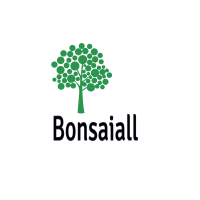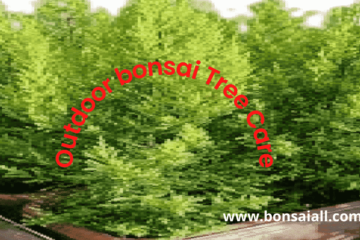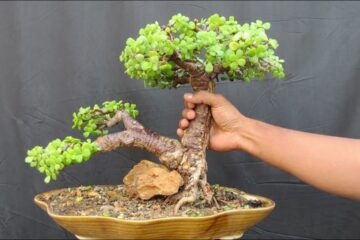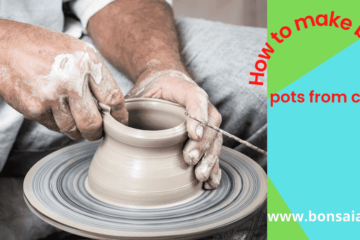Bald Cypress Bonsai trees are one of the most beautiful trees in the world, and they’re also one of the easiest species to grow, making them a great choice for beginners looking to get into growing bonsai trees. Read on to learn about Bald Cypress Bonsai basics, as well as what it takes to grow the species. where you can buy it online, and exactly how to plant your tree and care for it properly at home. You’ll have your own lovely tree in no time!
History of Bald Cypress Bonsai
Content Overview
The bald cypress Bonsai tree is an incredible species that can live up to several thousand years. It’s native to eastern North America and grows in both fresh and saltwater wetlands. There are several species of bald cypress bonsai, but they all fall into one of two subspecies: cupriferous or Taxodium distichum. Cupuliferus is commonly called pond cypress and grows in freshwater wetlands, while distichum also goes by swamp cypress or bald cypress.
You’ll find bald cypress trees in warm climates like the coastal regions of Georgia, Louisiana, and Texas. They prefer freshwater wetlands, but they can also live in swamps with stagnant or brackish water. Bald cypress Bonsai trees like to grow in soft mud that has plenty of oxygen and doesn’t flood too frequently or dry out too long between floods.
These trees have many uses, but they’re best known as a popular landscaping species. They’re not just pretty, but they’re also very practical: in addition to looking nice and creating shade, bald cypress trees filter out pollutants from drinking water, prevent soil erosion during floods, protect against saltwater damage during hurricanes, and storms, and stabilize land during windy days. Furthermore, these trees can survive droughts better than most other species because of their slow growth rate.
Can You Bonsai Bald Cypress
Bonsai is a type of art that aims to create miniature plants. Most people donot know how to grow bonsai trees, but you can also grow bonsai from shrubs, succulents, and other perennials as well. While growing bonsai trees is not as difficult as it may seem, it’s important that you choose plant varieties that are ideal for bonsai training. One great example is bald cypress bonsai trees.
A bald cypress tree (Taxodium distichum) is an evergreen conifer native to North America. Its wood has been widely used in lumber, and its juice has been used as a folk remedy since ancient times. It’s also one of many species you can grow as bonsai trees.
The bald cypress tree bonsai makes a great first project because it can thrive in containers as small as three gallons. You’ll be able to maintain and display it relatively easily, and you can easily master styling techniques such as pruning bald cypress bonsai trees. All you need is some patience, some artistic ability, and knowledge of what you’re doing.
Bald cypress Bonsai scientific name
Taxodium distichum, is a species of conifer native to southeastern North America. It is one of three Taxodium species found in eastern North America, and one of two taxodioids native to that region; the other being pond cypress (T. ascendens).
The tree grows in shallow water along stream banks from Nova Scotia west through southern Ontario and southeast Minnesota down through northern Alabama and east Texas, with disjunct populations in central Florida, on Cape Cod in Massachusetts, and Long Island in New York.
How to Start a Bald Cypress Bonsai?
Planting a bald cypress tree is much like planting any other tree. The roots should be planted about an inch or two into moist, but not soggy, soil. Water thoroughly after planting and continue to water throughout spring and summer as needed.
Start with Buying Tree: Before you can start growing a bald cypress bonsai, you’ll need to purchase one. If you’re just starting out, it’s best to buy a tree that is already trained into a bonsai shape. This way, you won’t have to spend time and energy learning how to train your own tree. You should also look for trees that are already flowering or fruiting so that they will be more likely to survive in their new environment.
Start With Cypress Bonsai Seed: If you’re looking to grow a bald cypress bonsai from seed, you can purchase seeds online or at your local garden center. You’ll need to plant them in a shallow container with soil that is moist but not soggy. Be sure that they receive plenty of sunlight and water when needed. It may take several years before your tree is ready for bonsai training, so be patient!
Read More :Ultimate Guides How To Grow A Bonsai Tree from Seed?
Start with Cutting: If you’re looking to grow a bald cypress bonsai from a cutting, you can use one that has already been cut or one that you have collected yourself. The first step is to place your cutting in water until it begins to root. Then, plant it in moist soil and continue to water as needed.
The final step is a matter of careful pruning and training. This involves keeping your bonsai tree small by pruning its leaves, branches, and roots. You’ll also need to train it into an appropriate shape so that you can give it a beautiful, polished look.
First, make your cut at right angles and place the bald cypress bonsai in water immediately!
Then, place a brass wire around your tree and make sure that it is secured tightly. You will have to do some pruning over time to get your bald cypress into shape, but be careful not to cut too much off in any one sitting. It is best if you can perform several small cuts rather than one large one so that you don’t risk damaging your tree.
Once your tree is secured with a wire, you’ll need to prune away its branches. You should look for branches that are crossing or competing with each other and cut them off at their base. You should also look at your tree’s overall shape and decide if it needs more space between its trunk and large branches or a thinner trunk near its base.
Read More :How to Planting Cypress from Cypress Cutting.
How to Grow a Bald Cypress Bonsai From Seed??
It’s rare to find one of these trees available for sale, and most bald cypress bonsai are propagated from cuttings. The seed is produced in small capsules located about two-thirds the height of mature trees, often high enough that you’ll need a ladder and some serious arm strength to get them down.
If you’re lucky enough to live near a bald cypress bonsai tree, collect some seeds when you see them. Even if you don’t have a suitable place in your yard for a tree that big, it would make an interesting addition to your bonsai collection. Even though bald cypress trees are aquatic and grow in water, they can be grown successfully in pots such as bonsai.
Use a watering can or hose attachment and gently water your seeds. Be careful not to oversoak them. A few drops at a time will do, so you don’t drown them. Keep your seeds moist, but don’t let them get soggy. After about two weeks you should start seeing tiny green leaves appear on your seedlings.
The bald cypress is a conifer, so it will grow needles instead of leaves. Like pine trees, these will turn brown and fall off your tree as part of its natural seasonal process. At some point, you’ll need to repot your bald cypress bonsai. Don’t worry, though – it doesn’t require nearly as much care or maintenance as other bonsai trees do.
Bald Cypress growth Rate
The bald cypress is a slow-growing tree, but not necessarily a long-lived one. The lifespan of most bald cypress trees ranges from 75 to 100 years, but some specimens can live up to 250 years with good care. Because they grow so slowly, they are particularly susceptible to fungi or disease problems if stressed in any way.
The bald cypress can grow in many different kinds of environments and conditions, including swamps, marshes, riverbanks, and floodplains. Most bald cypress trees prefer slightly acidic soils with a lot of organic matter. They will often thrive in sandy or silty soils with poor drainage. The presence of an ample supply of water is important because they do not tolerate drought well.
What does a cypress tree seed look like
A cypress tree is a type of conifer that produces seeds that look similar to cones. Cypress trees grow in freshwater environments around ponds, swamps, and other bodies of water. When they first start growing, they produce cone-like clusters above their branches.
These are actually clusters of seeds covered by scales called catkins. Each tree has its own distinct shape, so it is important to find a species suited to your environment and aesthetic tastes if you want them as bonsai trees.
In order to germinate these seeds, you will need to wait until late spring or early summer when temperatures begin to rise. Once temperatures hit 60 degrees Fahrenheit (16 degrees Celsius), soak your seeds overnight before planting them in moist soil. Be sure not to bury them too deep or leave them out on dry ground—this can kill young cypress seedlings.
When to plant bald cypress
When planting a bald cypress bonsai plant, place them outside in full sunlight in a shady area. It is extremely important that you plant your trees in soil, as they cannot survive in water.
Keep your tree outside year-round so it has plenty of time to grow and mature before winter comes along. As long as your area stays above 40 degrees Fahrenheit during the winter months, there is no need to move it inside until spring returns.
Once your bald cypress bonsai tree has been in your care for a year, you can move it inside. Keep it in an area that is between 65 and 80 degrees Fahrenheit during summer and fall. During winter, however, keep it at 50 degrees Fahrenheit or less.
Ensure that you do not expose your bald cypress bonsai tree to cold drafts or freezing temperatures. Moving it outside again once spring arrives will help it regain its strength after being inside during the winter months.
How to Care for bald Cypress tree for Beginners
The maintenance of a young bald cypress bonsai tree is relatively easy. You only need to regularly trim the tips, water them, and take care when pruning your plant each year. We will focus on how to keep an adult cypress looking nice in this guide as well; however, there are many important differences between mature trees that we won’t address here.
You have followed the below things:
What is the best place to grow bald Cypress?
The bald cypress is hardy in USDA plant hardiness zones 5 through 9, but it prefers a location with good drainage and requires full sun. It will tolerate partial shade, but growth will be slower. The tree can grow in wet soil, although waterlogged soil is better suited for its close cousin, the pond cypress (Taxodium distichum var.
Taxodium distichum var. macrocephalum). In summer, it’s important that your bald cypress has a well-drained location where it can receive at least six hours of sunlight each day. If you live in a warmer region and your tree receives more than six hours of sunlight daily, be sure to provide some shade during hot afternoons, as temperatures above 85 degrees Fahrenheit will scorch leaves and lead to leaf drops.
Soil Preparation for Bald Cypress Bonsai
You must grow the bald cypress in a soil rich with organic matter and calcium. The tree prefers acidic soils, so those that have medium pH levels will work fine. In deep fertile soils, however, roots won’t be able to penetrate – this is where a composted or leaf mold-based planting mix comes in handy for Cypress bonsai! If you’re using standard potting soil from your local nursery as well.
Perfect Temperature and Humidity:
It can endure warm and sunny weather, but not frigid or freezing weather. To keep it beautiful, you must maintain a constant temperature level. It will die if the temperature drops below 14°F. Its lowest temperature is 14°F.
During the winter, when the temperature drops, you need to treat this plant with extra care. Air has too much humidity in this weather, which is not ideal for bald cypress plants.
Watering :
Always water your bald cypress tree in the summer to keep it established. So,you have to know the proper waterting methods for your bald cypress bonsai trees.If you should have a dry spell and wait too long to water, then this plant can die if left alone for an extended period of time (Two months).
In August when temperatures are nice around here I am watering my trees once every two weeks or even just at say midnight on Wednesdays. You want enough that there is some moisture beneath the bark but don’t overwater because if the roots start to rot off from sitting wet all winter you will have lots of trouble starting things over again in the spring. If it looks dry in the morning and not given enough water during your routine, “but” I always make sure that every tree is watered at least once so there isn’t an issue with one or two trees being neglected by others.
Fertilizing:
Every 2 weeks throughout the growing season, apply Miracle Grow Cypress Bonsai fertilizer around the base of your tree at a rate of 1/4 teaspoon per gallon (11.1 mL) as part of your regular routine or double that amount during winter conditions and when temperatures are below 50 degrees F
When planting it’s important to make sure you plant it in fairly wind-free areas away from large puddles where water can freeze over. Most bald cypress plants have their roots suspended in the shallow water so if it freezes, thawing will be a pain for you to figure out.
Water deeply and keep the bottom of your tree clear from any surface scum or algae with a soft brush on things like an old toothbrush that’s been soaked all day to help get them out. If something happens between now and next spring (like yours did this year).
PRUNE AND RAMP WIRING
Remember the styles that the Bald Cypress looks best in while pruning the tree. It has been growing as a formal upright, clumping, double trunked informal upright, literary, and leaning. Growers have had success with it. Typically, the plant will grow outdoors in the wild and have a cluster of drooping, horizontal limbs. Making it into a bonsai tree using the formal upright is the best route, but others will fulfill it as well.
Many of the trees found in Florida will be Everglades or Pond Cypresses, rather than true cypresses. The literary type of tree prefers these since they are more creeping. The branches of these smaller cypress trees grow along the trunk and nearly start at the ground.
The bald cypress Bonsai tree grows quickly, so inspect it frequently. Wire can potentially damage the bark if growers don’t keep an eye on their bonsai. Instead of wire, the branches might be twined together. Some growers have had success making a small incision in the larger branches. The Bald Cypress will soon heal its wound if they are able to pull the branch down.
SHAPING FOLIAGE AND MAKING CYPRESS KNEES
To shape foliage, simply pinch off new growth. Growers may let the branch develop on its own for a year before pruning it in early spring if the branch needs to thicken. A new shoot will appear from the location wherever the tree is trimmed. Leaves can be plucked from desired locations and the tree can be pruned throughout the summer.
The grower only needs to spend more time without repotting the plant in order to produce cypress knees. Three years is normally enough time. The knee may be formed by bringing the roots to the surface and allowing them to thicken. The bonsai root will grow thicker and develop knees-like characteristics over the course of a few years.
PROPAGATION & REPLANTING BALD CYPRESS
To Propagate bonsai, users may use cuttings or air layers. Any pot or root pruning should be done in spring. Root pruning should be completed every two years or so because these plants are known to grow a meter in a single year.
The Bald Cypress does not need loose, gravelly soil, unlike other bonsai plants. In its natural habitat, it is normally surrounded by wet, swampy land and this effect needs to be recreated in real life. Mushroom compost is a good choice for heavy soils. The bonsai will not get enough moisture if the soil isn’t heavy enough. The Bald Cypress roots are almost immune to rotting, so choose a soil that retains as much moisture as feasible.
Bald cypress Bonsai pots should be flat and shallow. To make it more aesthetic, Bald Cypress usually goes very well with earth tones and muted glazes. Since the pot is often submerged in water, a smoother finish can help clean up dirt afterward.
DISEASES & PEST PROBLEMS
Bald Cypress Bonsai has a problem with Twig Blight, despite the fact that it is not susceptible to many insects. The pathogen is most common in dead or wounded tissue. The fungus will attack and kill the branch tips if the tree is stressed from being over-pruned. Any dead or damaged branches should be removed right away, rather than kept on the tree. By pruning correctly and regularly fertilizing the soil, this problem can be avoided.
When planted as a bonsai, this plant performs exceptionally. When used with potting soil, the lovely form and feathery leaves seem to glow. This bonsai tree is particularly suited for beginners and is popular with bonsai enthusiasts of all types. It is simple to grow and is not susceptible to a wide range of diseases and pests. The Bald Cypress Bonsai is a terrific first option for anyone interested in becoming a bonsai collector. It’s ideal for bonsai trees and simple to create for any beginner.
Bald Cypress Bonsai Leaves Care:
Tender, Fine-Leaved Evergreens: Sharp thorns & lots of shade. Extremely graceful in the landscape Sudden growths of needles represent numerous problems Owner should learn to tackle these quickly because they can be so devastating Bald cypress bonsai thrives under a full canopy.
AFTERCARE:
At the end of each season, your Bald Cypress Bonsai plant will lose its leaves. You can’t immediately remove all its foliage at the same time because if you do, it could cause other old branches to bend under and die when you leave them entirely alone. Cut off about 50 percent for a couple of weeks so that some new growth (new needles) pushes up from below. Once this happens transfer to fresh soil in decorative containers
What are the Problem and solutions for the Bald Cypress Bonsai tree?
1. Watering too much: Keeping your plant watered at the same level for a long time can cause excessive leaf loss.
2 . Shedding too quickly: Mildew and rot will attack from new growth that is more susceptible in dry conditions, while not all foliage was lost they get trapped on the branches or trunk of many trees during planting
There are several differences between Cypress Padauk and Japanese Black Pine which are the two most popular bonsai trees.
Bald Cypress Padauk: The Bald Cypress Bonsai or Blad Cypress Padauk will have a greater presence in your landscape than the Japanese Black Pine because of its larger size and finer texture.
Japanese Black Pine: The Japanese Black Pine is used more for its smaller stature, thin texture, and sparse foliage which gives it a more wispy appearance when compared to the Bald Cypress Bonsai.
What are the Facts about Bald Cypress bonsai?
Commonly known as Taxodium distichum, bald cypress bonsai is a species of coniferous tree. The scientific name of bald cypress bonsai is Taxodium distichum. It is native to China, Japan, and Eastern North America. When mature, it reaches a height of between 25 feet and 50 feet. It has reddish-brown bark which was widely used by Native Americans in making canoes and other crafts.
The wood is soft and lightweight. It has a natural resistance to rot. The wood was commonly used in coastal constructions before concrete and steel came into use. Due to its durability, bald cypress wood has been used as a tonewood by several famous guitar manufacturers including Martin Guitars and Gibson Guitars.
The leaves of the bald cypress bonsai are yellowish-green in color. They turn golden and brown in fall. The plant is dioecious, which means that it has male and female trees. Both male and female plants have cones with a reddish-brown color when mature. These cones produce seeds that are eaten by turkeys, squirrels, raccoons, deer, and other animals. A single tree may be either male or female but not both simultaneously.
The cones remain on trees over winter and open up in spring, releasing seeds. Each seed has a long wing which causes it to be blown far away by winds. It is estimated that one tree produces anywhere between 200,000 and 300,000 seeds every year. However, there are only a few hundred seedlings that survive and grow into mature trees each year due to competition from other species of plants that germinate at the same time.
Read More: The Bald Cypress tree Facts and Problems You Must need to Know
The final verdict
Although using these terms above, you have an overall idea about the production, care and maintenance of bald cypress bonsai. But in this short time, it is really difficult to develop you as a professional bonsai gardener.
However, don’t mind anything. There are many bonsai experts and experienced bonsai gardeners who share their inexperience throughout the year through their blogs or books. If you like to read blogs or books, bonsai blogs or books may be the best way to follow this hobby with them. You can read the best bonsai books to learn more about it.



